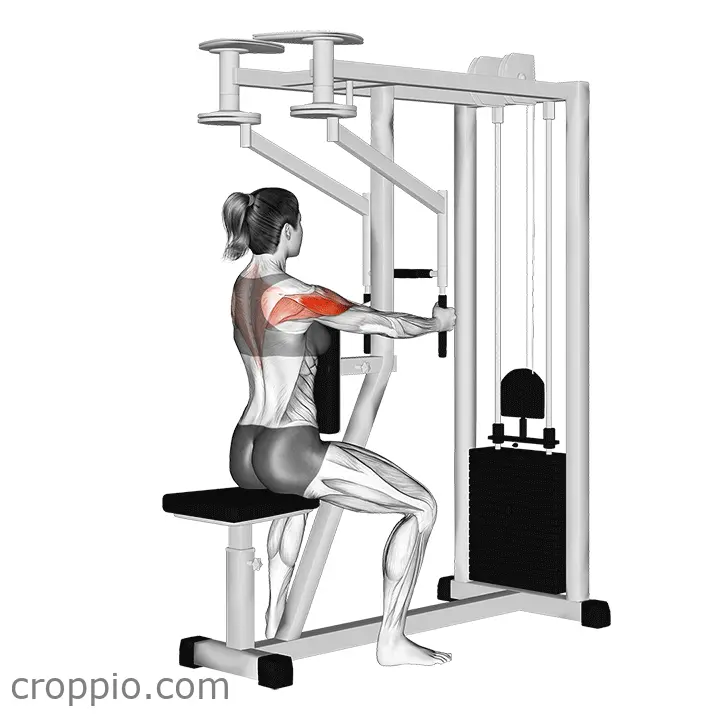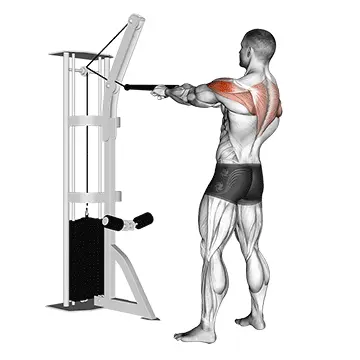Dumbbell Rear Delt Row

Muscles Involved
The dumbbell rear delt row is an effective exercise primarily targeting the posterior deltoids, which are crucial for shoulder stabilization and aesthetics. In addition to the rear deltoids, this exercise also engages the rhomboids and trapezius, promoting balanced shoulder development and improved posture. Secondary muscles involved include the latissimus dorsi and the teres major, which assist in pulling motions, further enhancing upper back strength.
Top Mistakes
- Rounded Back: Failing to maintain a neutral spine can lead to strain and potential injury.
- Overextension: Lifting the elbows higher than shoulder level can disengage the rear delts and shift the focus to the upper traps.
- Using Too Much Weight: Heaving heavy weights can compromise form, making the exercise less effective.
- Lack of Control: Performing the movement too quickly can reduce muscle engagement and increase injury risk.
Execution Tips
- Proper Stance: Begin with feet shoulder-width apart, hinge at the hips, and keep a slight bend in the knees.
- Grip Position: Hold a dumbbell in each hand with palms facing each other (neutral grip), ensuring your arms hang straight down.
- Engage the Core: Keep your core tight to maintain spine stability throughout the movement.
- Rowing Technique: Pull the dumbbells towards your chest while keeping your elbows at a 45-degree angle, focusing on squeezing the shoulder blades together at the top.
- Controlled Descent: Lower the weights slowly and with control to maximize muscle engagement and prevent dropping them.
Workouts
The dumbbell rear delt row can be seamlessly integrated into an upper body workout routine. Consider performing 3-4 sets of 10-15 reps, allowing for adequate rest between sets. To enhance muscular balance, pair this exercise with push movements like bench presses or shoulder presses. Additionally, include complementary exercises such as bent-over lateral raises or face pulls to further target the rear delts and upper back, promoting comprehensive shoulder training.
Conclusion
Incorporating the dumbbell rear delt row into your fitness regimen offers numerous benefits, including improved shoulder stability, enhanced posture, and increased upper back strength. By focusing on proper execution and avoiding common mistakes, you can effectively target the rear deltoids and create a stronger, more well-rounded physique. Prioritize this exercise for considering your overall aesthetic and functional arm strength development.



